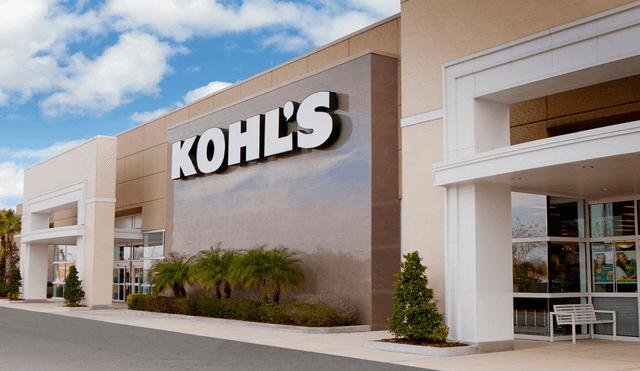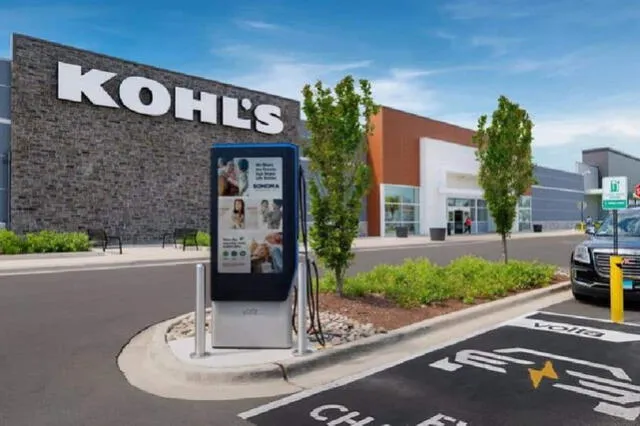Which Kohl’s stores in the US are closing in 2025? See if your State is on the list
Kohl’s has announced the closure of 27 stores across the U.S. by April 2025, affecting multiple states. Find out on the next information.

Kohl’s has officially announced plans to close 27 underperforming stores across multiple states by April 2025, marking another shift in the retail giant’s strategy to navigate ongoing financial struggles. This decision comes as part of the company’s efforts to optimize operations and focus on profitability, following a decline in sales over the past 11 quarters.
With retail closures continuing to affect major chains, Kohl’s joins other companies like Macy’s and Foot Locker in reducing its physical footprint while adapting to the evolving retail landscape. The company has also confirmed the closure of an e-commerce fulfillment center in San Bernardino, California, by May 2025, signaling a shift in its distribution strategy.

ALSO SEE: The life of Mary Anne MacLeod: Donald Trump’s immigrant mother who started with $50 in the US
Which Kohl's stores are closing across the US in 2025?
The 27 store closures will impact multiple states, with California seeing the most significant number of shutdowns. Kohl’s has not disclosed plans for additional closures beyond 2025 but has indicated that these changes are part of a broader realignment strategy aimed at stabilizing the company’s long-term financial health.
- Alabama: Spanish Fort - 21000 Town Centre Ave.
- Arkansas: Little Rock West - 13909 Chenal Pkwy.
- Colorado: Arapahoe Crossing (Aurora): 6584 S Parker Rd.
- Georgia: Duluth: 2050 W Liddell Rd.
- Idaho: Boise - 400 N Milwaukee St.
- Massachusetts: Stoughton - 501 Technology Center Dr.
- New Jersey: East Windsor - 72 Princeton Hightstown Rd.
- Oregon: Portland Gateway - 10010 NE Halsey St.
- Pennsylvania: Pottstown - 351 W Schuylkill Rd.
- Texas: North Dallas - 18224 Preston Rd.
- Utah: Riverton - 13319 S 3600 W Ste 13

The company struggles for financial challenges and shifting consumer trends. Photo: America Trends.
- California:
- Balboa (San Diego): 5505 Balboa Ave.
- Encinitas: 134 N El Camino Real
- Fremont: 43782 Christy St.
- Mountain View: 350 Showers Dr.
- Napa: 1116 1st St.
- Pleasanton: 4525 Rosewood Dr.
- Point West (Sacramento): 1896 Arden Way
- San Rafael: 5010 Northgate Dr.
- San Luis Obispo: 205 Madonna Rd.
- Westchester: 8739 S Sepulveda Blvd.
- Illinois:
- Plainfield - 11860 S Route 59
- Spring Hill (West Dundee) - 3000 Spring Hill Ring Rd.
- Ohio:
- Blue Ash - 4150 Hunt Rd.
- Forest Park (Cincinnati) - 100 Cincinnati Mills Dr.
- Virginia:
- Herndon - 2100 Centreville Rd
- Williamsburg - Grain Mill No. 100, PLZ
California will experience the highest number of closures, with 10 stores shutting down, reflecting a major shift in the company’s regional strategy.
Why is Kohl’s closing these stores?
The decision to close these locations is primarily driven by declining sales, changing consumer behavior, and shifting priorities within the company’s business model. Over the past several years, Kohl’s has struggled with diminishing foot traffic and increasing competition from both e-commerce platforms and other major retailers.
In response to these challenges, the company has been reevaluating its store performance and cutting costs, leading to the current wave of closures. As part of this restructuring, Ashley Buchanan, a former Walmart executive, was appointed as the new CEO of Kohl’s in January 2025. Buchanan succeeds Tom Kingsbury, who stepped down after acknowledging strategic missteps, such as reducing private-label brands and shifting merchandise offerings, which alienated some loyal customers.
Additionally, the company is shutting down its e-commerce fulfillment center in San Bernardino, California, which is expected to streamline its distribution processes and improve efficiency.